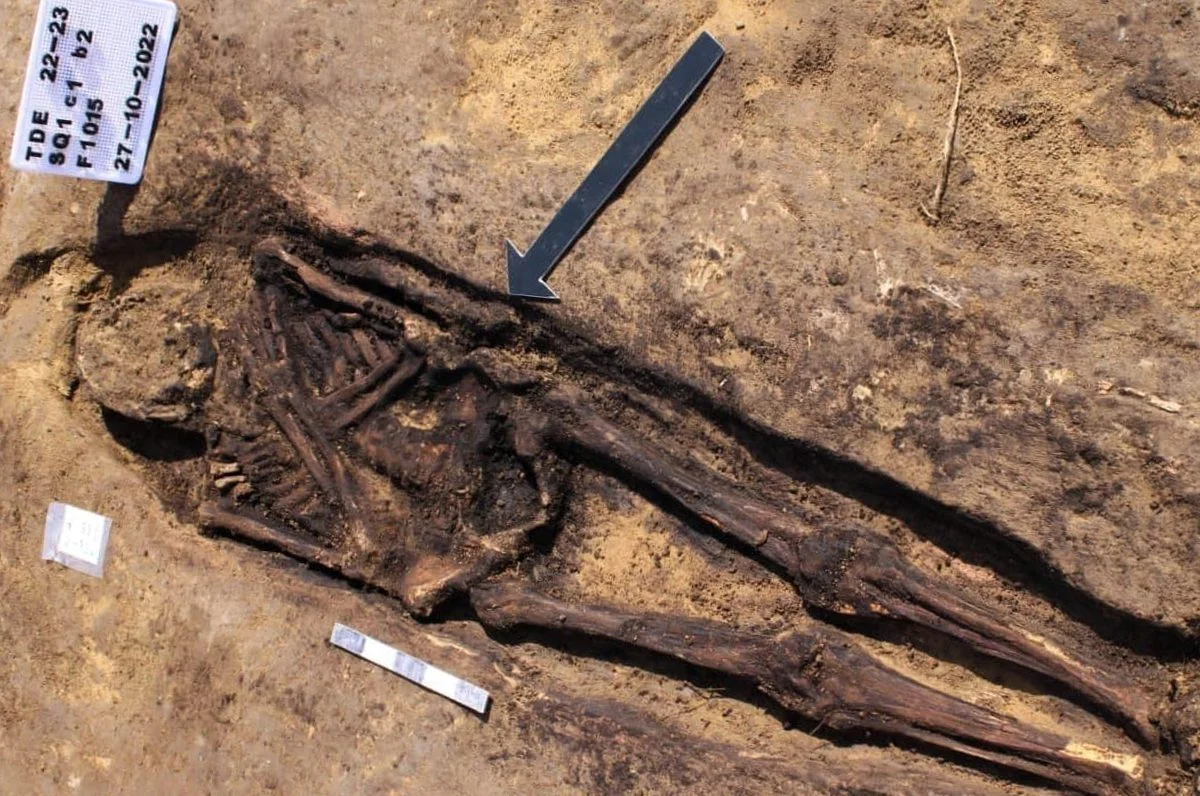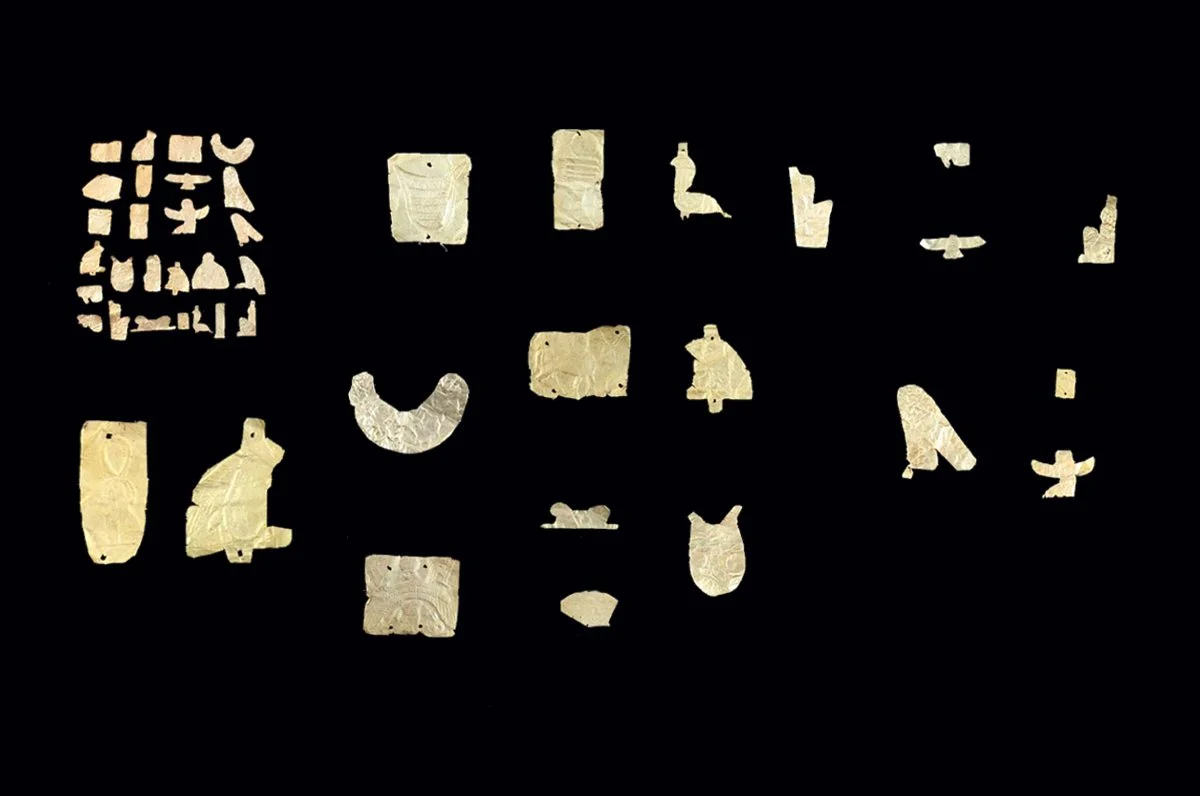Archaeologists excavating at Tel El-Deir, in the Damietta Governorate, Egypt, have uncovered Late Period tombs containing pieces of gold foil.
The tombs are part of a cemetery, that preliminary dating suggests are from the Twenty-sixth Dynasty of Egypt between 664 and 525 BC, otherwise known as the Saite Period, marking the beginning of the Late Period of Ancient Egypt.
Some of the burials are simple pits, while others are encased with a mudbrick lining. Ayman Ashmawy, head of the council’s Egyptian antiquities sector, said: “The architectural design of the tombs and items of pottery found inside them, had provided a good indication of their age.”
Archaeologists found that some of the burials are covered with gold foil figures that depict Ancient Egyptian deities such as: Isis, Bastet and Horus (in the form of a winged falcon), as well as gold foils in the shape of squares, rectangles and other obscure shapes and depictions.

Excavations also uncovered numerous grave goods, including a headrest, various funerary amulets, miniature canopic jars used for preserving body parts in the mummification process, scarabs, and a collection of statues representing the deities Isis, Neftis and Djehuti.
Previous excavations in 2018 discovered a Roman stone sarcophagus, along with over 700 amulets depicting Isis, Horus and Taweret, while in 2019, archaeologists found coins from the Byzantine era and a group of ushabti statues from the 26th dynasty.
Mr. Reda Saleh, Director of Archaeology in the Damietta Region, has advised that excavations led by an Egyptian Archaeological Mission, will continue to reveal new insights into the cross-roads of civilisations between the Ancient Egyptians, Greek and Romans, which was witnessed at Tel El-Deir.
Ministry of Tourism and Antiquities
Header Image Credit : Ministry of Tourism and Antiquities





